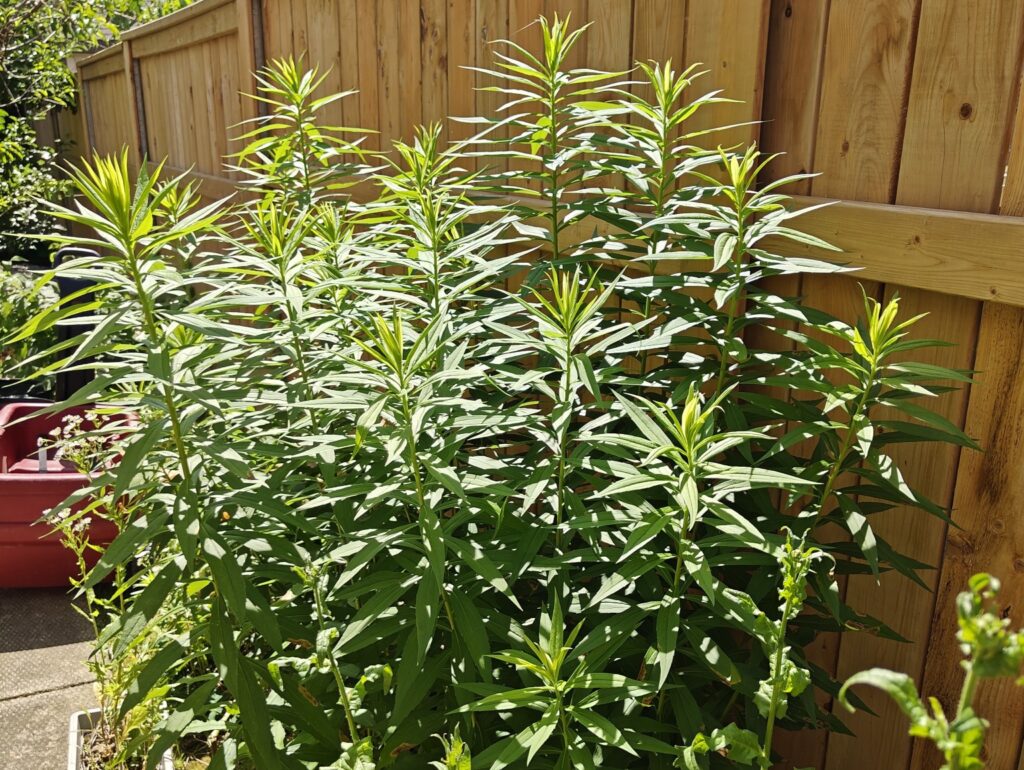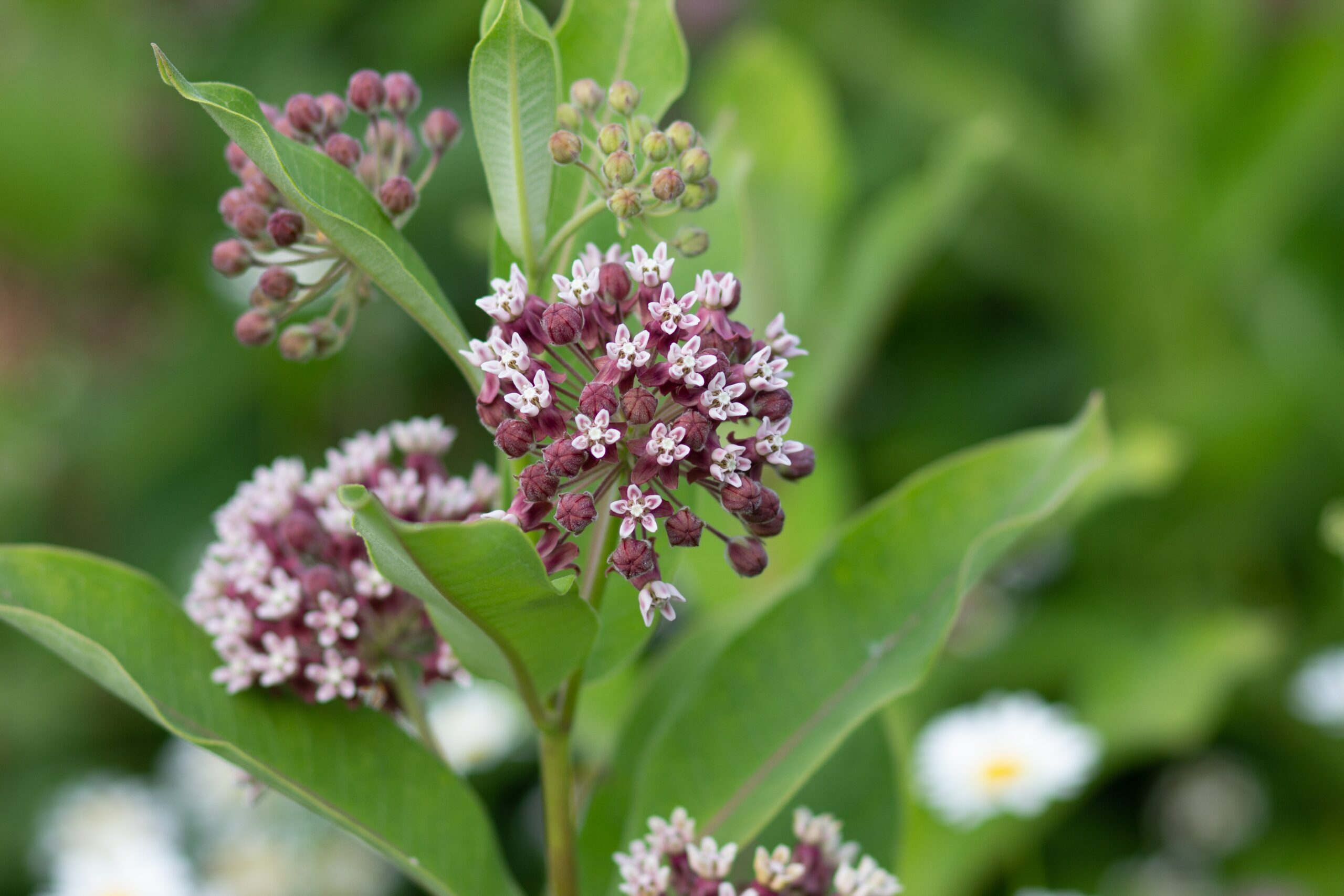By Claudette Sims, Halton Master Gardener
Keep things blooming
Deadheading, pinching, cutting back, and thinning are excellent techniques to keep flowers blooming longer, larger and healthier. Cut back early blooming perennials, e.g., hardy geraniums, spiderwort, and delphiniums after the first flush of flowers to encourage new growth and blooms. Shorten stems of fall flowering plants like asters, mums, Joe-Pye weed, and goldenrod to keep them sturdy and compact. Trim just above a set of leaves.
Common milkweed
Trim back some of your common milkweed (Asclepias syriaca) stems the second or third week of July to stimulate new, young growth, which is more attractive to monarchs for egg laying.
Veggies
Water during dry or hot weather toavoid stressing plants. Do not over fertilize tomatoes, peppers or squash as this can lead to blossom end rot. Snip herbs and chives to encourage new bushy growth. Harvest lettuce by snipping greens at soil level for continued growth.
Weeds
Check this Ontario Weed Gallery Guide to help identify weeds and find management options. (Note that some native plants likemilkweed are included as “weeds.”) Target removal of seedheads to reduce the seed bank for next year. Lawn weeds that are actively growing can be killed using an approved herbicide such as chloroindole (a naturally occurring organic compound) or iron. Weeds in bricks/driveways can be cut using a line trimmer, solarized or sprayed with an approved herbicide.

Invasive plants
Be aware that invasive plants are still sold at nurseries, so make sure new purchases are not on invasive plant lists. Check this Grow Me Instead Guide for info on what is invasive as well as non-invasive alternatives.
Summer watering
Water earlier in the day,and at the base of plants or using soaker hoses. Water spring planted trees and shrubs regularly and existing trees less frequently, but deeply. Potted plants may need watering twice a day in hot, dry weather. Stop watering garlic two to three weeks before harvest (about mid-July).
Lawn
Mow high (3”/7.5 cm) to shade out weeds. Leave the clippings on the grass to return nutrients and water to the soil. Let the lawn go dormant in dry hot spells (it may yellow) by watering only every other week. Water dormant grass if the blades don’t spring back upright when you walk on it or if they fold to show their lighter blueish green underside. Learn more about summer care of lawns.
Nurture nature
Water is essential to life. Leave a shallow dish of water out for thirsty critters like butterflies, chipmunks, and squirrels.





